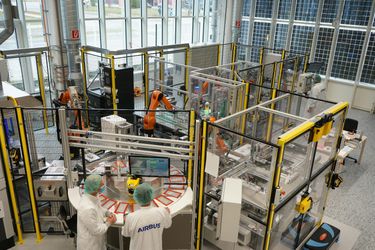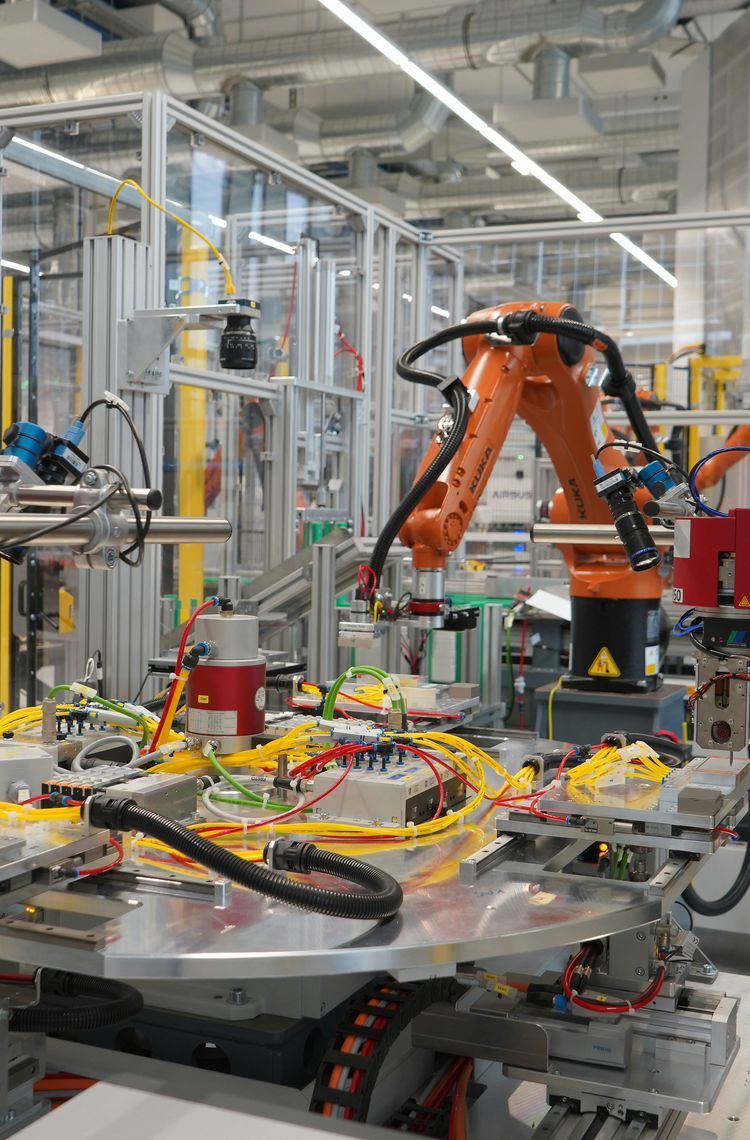At the Airbus Defence and Space facility in Ottobrunn, Germany, “Sirius” picks up a solar cell and places it on the turntable to the left. The cell’s connector is then attached and welded, followed by the finished unit’s insertion into a magazine. And the entire process starts again.
Sirius and 17 robot “colleagues” (all named after stars in the Milky Way) form the heart of Europe’s very first fully automated solar-array production facility, which began operations this month. Solar arrays are used on satellites and spacecraft to provide power that is converted from sunlight.
Investing in the future
Airbus has invested more than €15 million in the facility, with this new Industry 4.0 production line serving as a flagship project for the company’s industrial strategy. “Sirius never gets tired and doesn’t make any mistakes,” says Sirius’ manager Jens Birkel, who is in charge of solar array production and test at Airbus in Ottobrunn.
From an individual cell to a completed solar array, the robots carry out a total of 60 steps across six stations. After Sirius has fed the individual solar cells into the production line, “Vega” laminates the cells with a glass covering to protect them against cosmic radiation in space.
“Sirius never gets tired and doesn’t make any mistakes.”
Jens Birkel, Head of Solar Array Engineering

“Capella” then welds diodes to the solar cells, before “Bellatrix” connects them together into strings, as the individual sections of a solar array are called. “Antarix” cleans the panels and prepares them for adhesion. Once that is complete, “Rigel” takes over and inserts the individual sections into the solar array.
“The Ottobrunn facility combines automation, robotisation, digitalisation and artificial intelligence to boost our productivity, quality and cost efficiency,” explained Andreas Vogel, Head of Engineering & Operations at Spacecraft Equipment.
The results are clear: Ottobrunn’s robots have cut lead times for solar array production in half, while costs are going down as well. “It’s also increasing our competitiveness on the global market,” Andreas added.
Working in harmony
After some initial apprehension from the human staff, Birkel says that everyone has learned to work well with the robots – with team members focussing on tasks that the machines cannot manage, such as wiring or testing the solar panels.
He explained: “The 18 robots take care of the monotonous and repetitive work, freeing up time for Airbus personnel to focus more on innovations, such as new solar-array designs or the manufacturing of customer parts – far away from the pressures of production. Sirius and the other 17 robots then put these innovations into practice.”
Moving forward, the team would like to ramp up production even further – responding to satellite constellations composed several hundred satellites that need to be expanded quickly. This would see the robots and their production line opening up a new market for Airbus, as well as confirming Ottobrunn’s status as a solar array centre of expertise.

